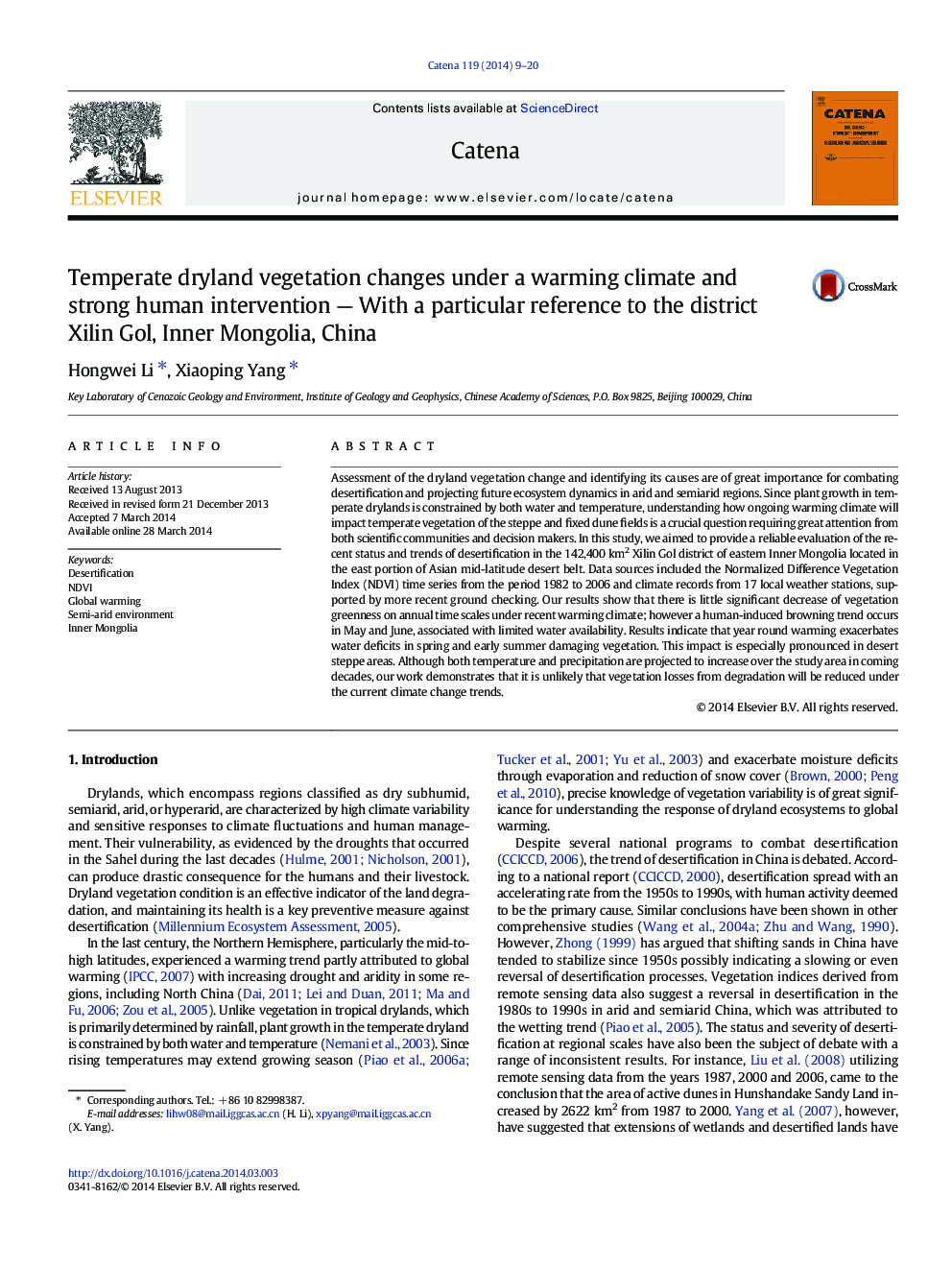| کد مقاله | کد نشریه | سال انتشار | مقاله انگلیسی | نسخه تمام متن |
|---|---|---|---|---|
| 4571442 | 1629233 | 2014 | 12 صفحه PDF | دانلود رایگان |

• Showing temporal and spatial changes of climate parameters for the entire study area
• Presenting vegetation changes in the study area at a monthly scale for 25 years
• Identifying relationships between vegetation changes, climate and socio-economic data
• Discussing unavoidable challenges under the warming despite rehabilitation efforts
Assessment of the dryland vegetation change and identifying its causes are of great importance for combating desertification and projecting future ecosystem dynamics in arid and semiarid regions. Since plant growth in temperate drylands is constrained by both water and temperature, understanding how ongoing warming climate will impact temperate vegetation of the steppe and fixed dune fields is a crucial question requiring great attention from both scientific communities and decision makers. In this study, we aimed to provide a reliable evaluation of the recent status and trends of desertification in the 142,400 km2 Xilin Gol district of eastern Inner Mongolia located in the east portion of Asian mid-latitude desert belt. Data sources included the Normalized Difference Vegetation Index (NDVI) time series from the period 1982 to 2006 and climate records from 17 local weather stations, supported by more recent ground checking. Our results show that there is little significant decrease of vegetation greenness on annual time scales under recent warming climate; however a human-induced browning trend occurs in May and June, associated with limited water availability. Results indicate that year round warming exacerbates water deficits in spring and early summer damaging vegetation. This impact is especially pronounced in desert steppe areas. Although both temperature and precipitation are projected to increase over the study area in coming decades, our work demonstrates that it is unlikely that vegetation losses from degradation will be reduced under the current climate change trends.
Journal: CATENA - Volume 119, August 2014, Pages 9–20